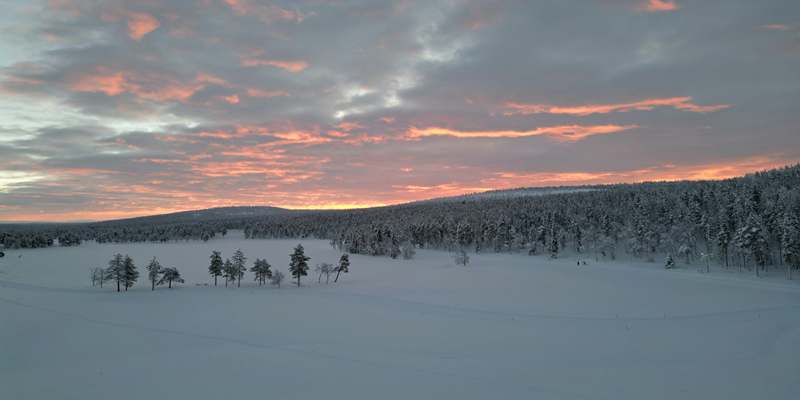Hiking the Arctic Circle Trail in Greenland takes you to one of the world’s most spectacular and unreachable places. The trail goes on for 165 kilometers from Kangerlussuaq to Sisimiut, allowing each wanderer to enjoy solitude and beautiful views of the tundra. Since the ground is rough and there is little support, it is particularly necessary to be well prepared for your hike. This guide will teach you about trail conditions and help you decide what gear is needed so you can stay safe. Having strong Arctic hiking skills and the right equipment will help make your journey comfortable and fun, whatever your previous experience with Greenland.

Understanding the Arctic Circle Trail
Overview of the Trail and Terrain
The entire Arctic Circle Trail lies within the Arctic Circle northwest of Greenland. The road passes through tundra, beside lakes and rivers, and over some low mountains, with no towns or paved roads. Those who go hiking need to handle everything by themselves. The path is through thrift, but it is mostly easy to stay on since there are cairns pointing the way. You might see arctic foxes, musk oxen, and reindeer when you go on a wildlife tour. Those wanting to be alone in nature will appreciate this remote path. Learning about the land helps people plan for the different challenges they might encounter.
Weather and Seasonal Conditions
Greenland’s Arctic weather is quite variable and may change fast, even when it’s summer. Hiking is best during mid-June to early September, as snow should have melted and you won’t face icy rivers. Nights can get very cold, often around freezing, at the start or finish of the season. Days are always bright in June because of the endless sunlight, but twilight may last longer during late summer hikes. It’s important to deal with weather-related dangers such as hypothermia and exposure. Checking the weather forecast and getting ready for wet, cold, and windy conditions helps keep hikers safe on the trails.
Navigation and Trail Markings
Although the Arctic Circle Trail is marked with stone cairns, these markers can be difficult to see in fog, snow, or low light. The trail passes through open wilderness, and there are no trees or large landmarks for orientation. Carrying a GPS device with preloaded maps and a compass with a paper topographic map is highly recommended. Some segments may diverge briefly or become faint due to snowmelt or vegetation. In remote sections, good navigation skills can prevent detours and delays. Being confident in your ability to follow the trail independently is essential, as help is not readily available.
Greenland Hiking Tips for Success
Fitness and Physical Preparation
The Arctic Circle Trail is not technically difficult but demands strong endurance. Hikers typically take 7–10 days to complete the trail, walking 15–25 kilometers daily with full packs. Preparation should include regular cardio workouts, long-distance walks with a loaded backpack, and strength training for legs and core. Training hikes on uneven terrain are especially useful. Mental preparation is just as important; hikers should be comfortable with solitude and self-reliance. The better your physical conditioning, the more you’ll enjoy the stunning scenery instead of struggling through exhaustion.
Trail Safety and Emergency Awareness
Safety is a top priority on the Arctic Circle Trail due to its remoteness. There is no cell service along the route, so carrying a satellite messenger or emergency beacon is essential. Rivers may be swollen from melting snow, and weather can shift quickly. Always inform someone of your route and expected return date. The trail has a few emergency huts, but these should not be relied upon for shelter unless absolutely necessary. Avoid risky crossings and always filter water from natural sources.

Campsite and Shelter Guidelines
Camping is permitted along the entire Arctic Circle Trail, and hikers should aim to leave no trace. The trail includes several simple wooden huts spaced out at irregular intervals. These huts offer shelter from bad weather but are unheated and fill up quickly in peak season. Carrying a reliable tent is essential. Choose camping spots on durable surfaces like gravel or grass to avoid damaging tundra plants. Use biodegradable soap, pack out trash, and bury human waste at least 50 meters from water sources.
Packing for the Arctic Trail
Essential Gear and Clothing
Packing the right gear is crucial for survival and comfort on the trail. A durable, waterproof backpack (50–70 liters) is necessary to carry all supplies. Waterproof boots with ankle support are a must. Don’t forget a quality tent, sleeping bag rated to freezing temperatures, and a sleeping pad for insulation. Other essentials include a headlamp, multitool, trekking poles, and extra batteries. Lightweight gear that provides warmth and protection without bulk is the key to enduring the Arctic conditions comfortably.
Food, Water, and Cooking Supplies
You must carry all food for the entire trek, with no resupply options along the trail. Calorie-dense, lightweight meals like dehydrated dishes, energy bars, nuts, and oats are recommended. A compact stove and fuel are essential for boiling water and cooking. Fresh water is widely available from lakes and streams, but always filter or boil it before drinking. A water filtration system or purification tablets are effective and light to carry. Don’t underestimate your food needs—after long days of hiking, your energy demands will be high. Planning each meal helps ensure balanced nutrition and reduces pack weight.
Eco-Friendly and Lightweight Packing Tips
To minimize impact and carry less, prioritize eco-friendly gear and packing strategies. Limit toiletries to essentials and store them in small containers. Select gear made from recycled or sustainable materials when possible. Keep your pack weight under 20 kilograms by evaluating each item’s necessity. Test your gear before the hike to make sure everything functions correctly and fits comfortably. Efficient packing not only reduces strain on your body but also helps protect the fragile Arctic environment for future generations of hikers.
Conclusion
Planning and packing wisely are vital for anyone tackling Greenland’s Arctic Circle Trail. With proper preparation, you can experience the raw beauty of untouched Arctic wilderness safely and responsibly. Understanding the trail conditions, weather, and necessary gear gives you the confidence to focus on the journey itself. Follow Greenland hiking tips and pack with care to enhance your experience, minimize your impact, and stay safe in one of Earth’s most remote landscapes. The trail is more than a hike—it’s a challenge and a privilege, offering solitude and a deep connection with the natural world.












